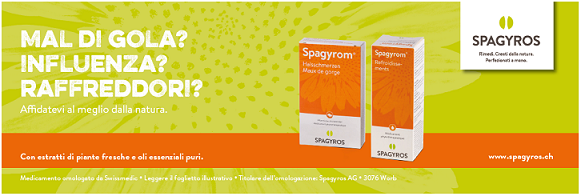Dobbiamo proprio scegliere tra progresso e tradizione, tra moderno e antico? Questo dibattito è vecchio come il mondo, in particolare nel settore della salute. Come pazienti non abbiamo mai avuto così tante informazioni e possibilità di trattamento come oggi. La tecnologia ha conquistato la medicina ed è giusto così. Tuttavia, per determinate indicazioni sono motivate anche cure complementari: è soprattutto il caso della spagiria.
Spagiria e alchimia: dal mito alla realtà
Nel Medioevo i due termini venivano spesso utilizzati come sinonimi. Paracelso, il noto medico e chirurgo del XVI secolo, definì la spagiria come la parte dell’alchimia che si dedica alla produzione di rimedi.
Questa terapia, senza dubbio un po’ misteriosa all’epoca, si occupa oggi molto concretamente non soltanto dei sintomi, ma anche delle cause delle malattie. Il naturale ripristino della salute stimola il potenziale di autoguarigione di ogni individuo, agendo su corpo, anima e mente.
Accento sulle piante
La spagiria vede le piante quale fonte di svariati principi attivi, ma anche quale rimedio per influire positivamente sull’energia vitale. Le essenze spagiriche contengono sostanze organiche e minerali, che vengono ricavate dalle piante tramite diverse fasi di trasformazione
(fermentazione, distillazione e calcinazione). Durante tale processo le sostanze vengono preparate in un modo unico. È da qui che deriva il significato della parola spagiria, che viene dai termini greci “Spao” (dividere) e “Ageir” (unire).
Procedura complessa
Esistono diversi metodi per produrre essenze spagiriche. Tuttavia, di principio per tutte queste procedure si tratta di ottenere durante il processo il potere curativo dell’intera pianta e non, come in altre forme terapeutiche, singoli “principi attivi”. Le piante intere provenienti dalla crescita selvatica o da coltivazioni qualificate sono raccolte a mano e pulite. In seguito, vengono spezzettate e fatte fermentare con acqua sorgiva distillata e lievito. Il mosto alcolico così ottenuto viene separato in numerose frazioni, idealmente con una distillazione dolce sotto vuoto. I resti delle piante vengono inceneriti e i sali della cenere vengono sciolti. La suddivisione è così terminata.
L’unione consiste nel ricongiungere sali e distillati in modi ben precisi. Con la produzione molto accurata e dispendiosa in termini di tempo, vengono creati rimedi profumati e altamente efficaci della migliore qualità.
Le essenze così ricavate da piante fresche mirano a ripristinare l’equilibrio naturale del corpo.
Le essenze spagiriche vengono perlopiù offerte come mix di diverse piante sotto forma di spray orale e sono disponibili in farmacie e drogherie. In questo modo il personale specializzato è in grado di soddisfare le esigenze individuali dei clienti e comporre un rimedio “personalizzato”. Questi preparati possono essere combinati con altri rimedi della medicina complementare o di quella tradizionale. Finora non sono noti effetti collaterali indesiderati.
Pubblicità
————————————————————————————————————————————————-

Spagyrics: “New” Type of Medicine
Mark Iwanicki, ND
By Editor Posted April 3, 2017 In Autoimmune/Allergy Medicine
Spagyric remedies are a “new” class of medicine that is gaining popularity in the holistic and natural health communities in the United States. Although the modality was first coined by Paracelsus, the famous Swiss physician of the 16th century, it is still something with which relatively few practitioners here in the United States are familiar. More popular in Germany, spagyric remedies, although similar to homeopathy and herbal medicine in many ways, are a unique class of medicine that can be used for a wide variety of health conditions, from acute disease to chronic conditions.
Spagyric remedies combine the phyto-therapeutic effects of botanical medicine with the energetic aspects of homeopathy. The remedies themselves have active biochemical constituents based on their specific herbal, and sometimes homeopathic metal, components. However, the spagyric process itself then potentiates the energetic signature of the plants in much the same way succussion and dilution do in the homeopathic process.
History
Spagyric remedies have their roots in ancient Hermetic, Egyptian and medieval alchemy. More specifically, spagyric medicine is the application of alchemical philosophy and techniques to create medicinal plant remedies. Alchemy as a science was always more than just the pursuit of turning base metals into gold. It stood for the much broader concepts of refinement, transformation, and turning the mundane into the divine. Its application in the field of herbal medicine is what initially inspired Hahnemann’s early energetic theories.(1)
Throughout the centuries, the goal of alchemists was to attain a comprehensive understanding of nature. A holistic philosophy served as the basis of their undertakings. The central point of this philosophy was the understanding that all levels of existence stand in a relationship to each other based upon natural laws. The ancient alchemical text, The Emerald Tablet, by Heremes Tristemigus, describes these laws, such as the Law of Polarity and the Law of the Rhythm of Nature, which help serve as the basis for spagyric philosophy and practical application.(1)

The Process
The famous Swiss medieval physician, Paracelsus, was the first to bring the ancient alchemical texts into the modern era and begin applying them to the creation of medicinal remedies. He believed that nature was the ultimate healer and that any illness could be cured by studying the rhythms and patterns of nature. Paracelsus, like modern naturopathic doctors, looked to nature to find cures for illnesses. This quote from Paracelsus fits perfectly with the foundational tenets of Naturopathic philosophy:
"Nature is the physician, not you. From her you must learn, not from yourself. She compounds the remedies, not you. See to it that you find out where Nature has her pharmacies, where her virtues have been written down, and in what boxes they are stored."(2)
More information and source: https://ndnr.com/autoimmuneallergy-medicine/spagyrics-new-type-of-medicine/
References
(1) Bartlett RA. Real Alchemy: A Primer of Practical Alchemy. 3rd ed. Ibis; 2009.
(2) Paracelsus, Waite AE. The Hermetic and Alchemical Writings of Paracelsus-Two Volumes in One. Martino Fine Books; 2009.





